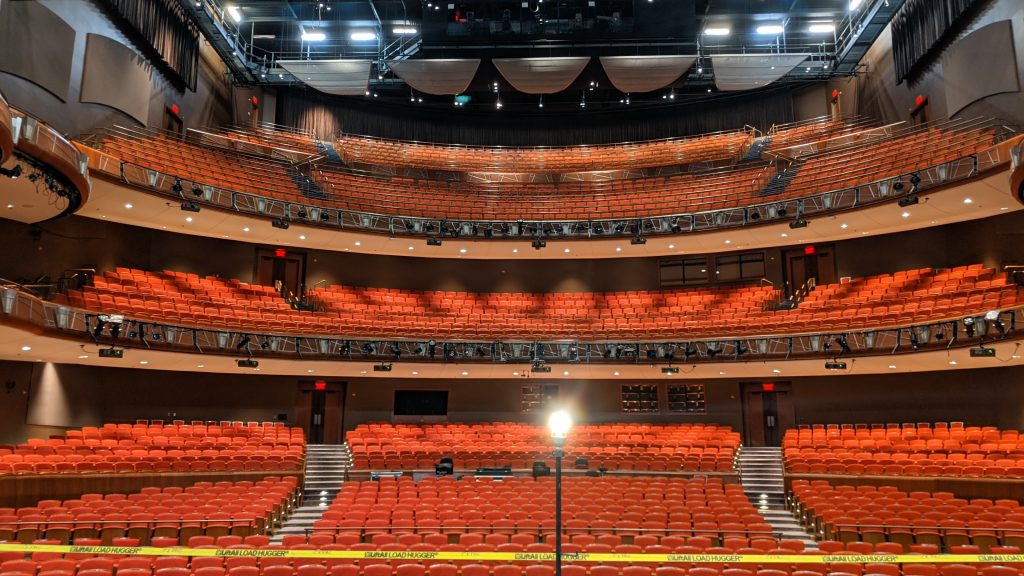
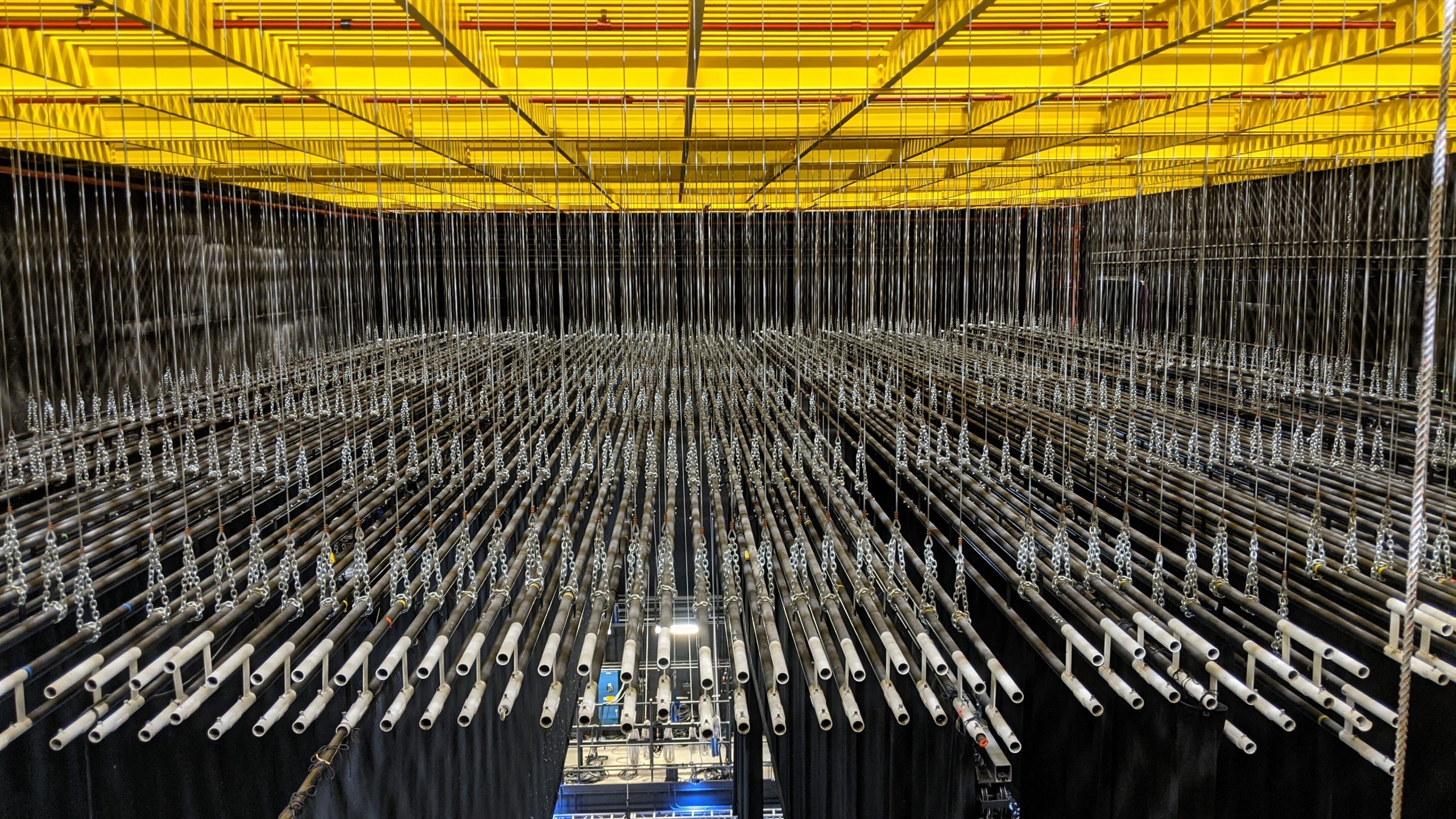
We asked Keno Snyder, Rhino Arizona’s Regional Director of Rigging, about a fly system inspection with our Rhino Georgia rigging team at the Cobb Energy Performing Arts Center in Atlanta. After seeing Keno’s amazing photos of the venue, we wanted his thoughts on the experience.
What are the live event venue inspections that you do?
Most of my inspection expertise is confined to theaters using counterweight fly systems. Some rigging systems are manually operated, either single-purchase, or double-purchase, or use a hand-operated crank-driven winch. Some systems are motorized using electric chain-drive motors, and electric or hydraulic-driven drums.
Regardless of the type of system, most of the inspection concentrates on the various rigging components and the functionality of that fly system. These components include the operation hand lines, rope locks, arbors, head blocks, tension blocks, loft blocks, and mule blocks. Additionally, they consist of wire rope, all types of terminations, and attachment points. Moreover, they involve the battens, as well as methods of adjustments and determining whether they are properly secured and operating correctly.
Other aspects of the inspection include whether the proper hardware is in use. All the hardware in a rigging system must have a proper working load limit (WLL) to handle the loads throughout the fly system.
While the inspection includes operating functions of electric motors or hydraulic-driven systems, I am only testing whether it’s functioning properly. I refer clients to the manufacturer for further troubleshooting.
How did you become a certified fly system operator?
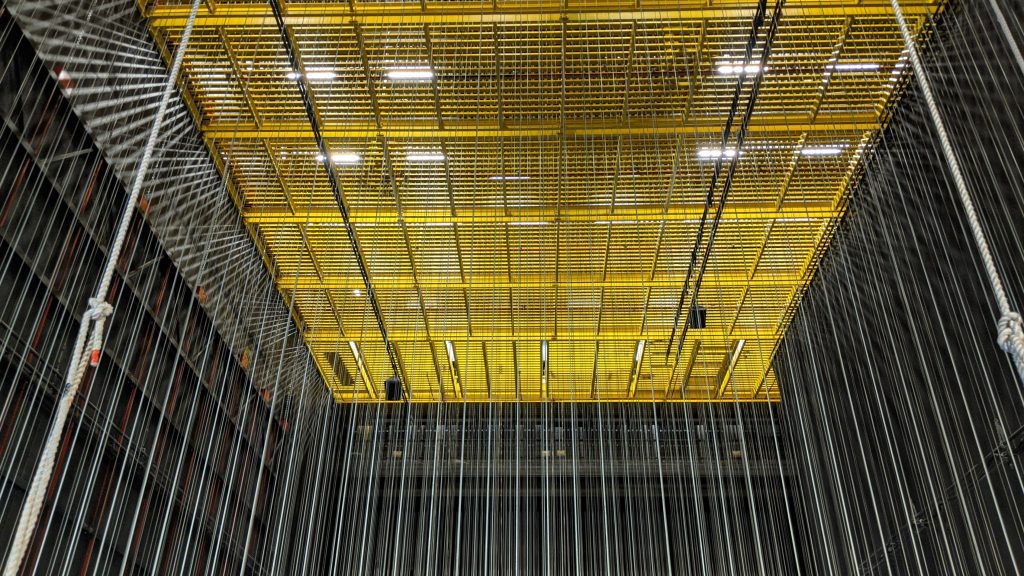
There isn’t an official rigging inspection certification, so I think the best way to answer this question is to look at the OSHA definition of a Qualified Person, which states: “Qualified” means one who, by possession of a recognized degree, certificate, or professional standing, or who by extensive knowledge, training, and experience, has successfully demonstrated their ability to solve or resolve problems related to the subject matter, the work, or the project.
Since starting with Rhino in 2005, I have gained extensive knowledge, training, and experience. I was trained as a Rigger and a Fly System Operator in 2006. By 2007 I became one of the lead Fly System Operators for Rhino Tucson. Until 2013, I operated the fly system for major productions brought in by Broadway in Tucson such as Mary Poppins, Wicked, Spamalot, Shrek, Grease, High School Musical, Chicago, and many others, as well as the annual local productions of The Nutcracker and other dance recitals by Tucson Regional Ballet and Ballet Tucson. Since 2011, I have been the Rhino Tucson Fly System Operator Trainer.
Since 2008, I have been a Head Rigger and Rigging and Rescue Trainer for Rhino Tucson. By 2017, I received my Entertainment Technician Certification Program (ETCP) certificates in Arena Rigging and Theatre Rigging. I became a Rigging Manager in 2018. As of 2023, I am now the Regional Rigging Director for Arizona.
Over the years I’ve worked with companies to install various rigging systems. Companies such as Rhino Safety Solutions, LA Pro Point, Barbizon, Clearwing, and Rainier Industries, not to mention other Rhino offices all over the country.
Did you study additional resources?
Throughout my career, I have attended many rigging seminars by Sapsis Rigging, The Chicago Flyhouse, JR Clancy, Entertainment Production Services, Total Structures, Columbus McKinnon, and others. I’ve studied books such as Entertainment Rigging by Harry Donovan, Stage Rigging Handbook by Jay O. Glerum, Nobody Looks Up: The History of the Counterweight Rigging System 1500-1925 by R.W. Boychuk, The Arena Rigger’s Handbook and Theatre Rigger’s Handbook by Delbert Hall and Brian Sickels, Entertainment Rigging in the 21st Century by various writers, and Rigging Math Made Simple by Delbert Hall.
In addition to the extensive documentation supplied by the manufacturers of these systems and their components, the Entertainment Services and Technology Association (ESTA) provides ANSI Standards for fly systems and rigging components such as ANSI E1.4-1 – 2022: Entertainment Technology – Manual Counterweight Rigging Systems.
In short, I’ve spent the last 18+ years with Rhino learning what I can and applying it where and how I can.
As for counterweight rigging system inspections, I feel that is something that has pursued me instead of me pursuing it. It started when our local Music Hall Theater in Tucson asked us to inspect their fly system. Since then, other Arizona theaters have contacted us to inspect their fly systems. Apart from the recent inspection conducted at the COBB Energy Performing Arts Center in Atlanta, GA, all of my inspections have taken place in Arizona.
What do you like most about doing them?
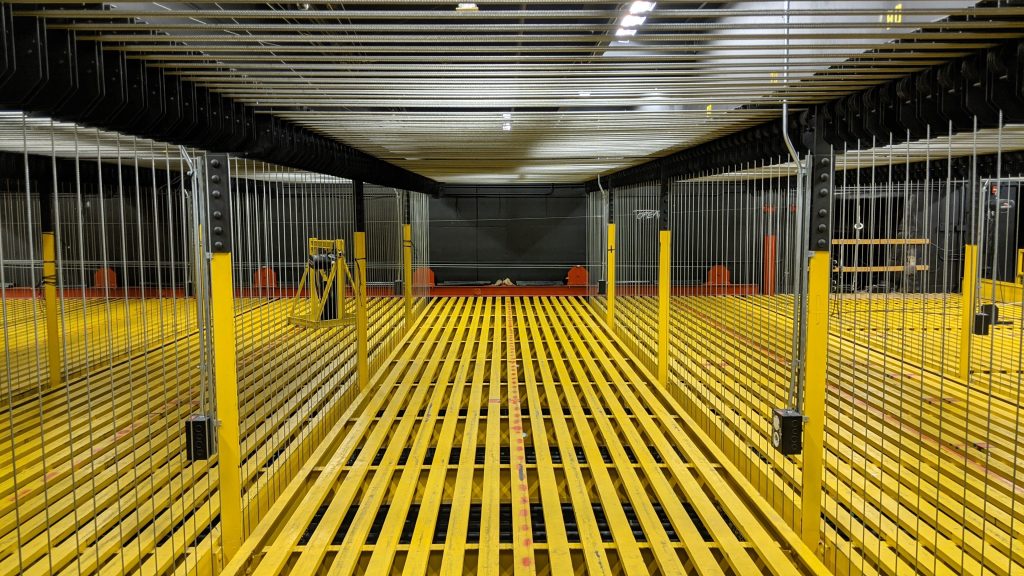
The most gratifying thing about conducting rigging and fly system inspections is safety. It’s satisfying to make sure these systems and components are safe and functioning properly so that everyone who is around them or operating them can do so safely.
I also enjoy educating Rhino employees and venue staff on how these systems function. The more knowledge they have about these systems and what to look for, the more they can determine when something is unsafe or not working properly.
What were the challenges and satisfactions of inspecting the counterweight fly system inspection?
Aside from the sheer size and number of line sets to inspect, COBB Energy Performing Arts Center didn’t pose many challenges. It was probably the best kept and operating system I have inspected. Overall, the inspection was pretty straightforward to execute. It just took some time to do it. COBB Energy Performing Arts Center is an amazing theater and the staff are great!!
The major challenge with these rigging inspections comes after the inspection when I have to type the report. It’s a lengthy process to review all of the notes and pictures from the inspection and build a comprehensive report outlining any issues found during the inspection.
Who were the other Rhinos assisting you? How did you go about assembling that team?
For this inspection, I had Myron Boykins, Brendan Faulkner, J’Von Roberts, Hannah Stapleton, and Rigging Manager Chris Bailey, all from the local Rhino Atlanta office. I asked Director of Operations Joe Malone and Rigging Manager Chris Bailey for employees familiar with the venue and with operating its counterweight fly system. I needed employees who could work at height and also someone who could operate the fly system fairly continuously for the 2-day inspection. Hannah Stapleton was paramount to our inspection as the fly system operator repeatedly moving line sets throughout the day.
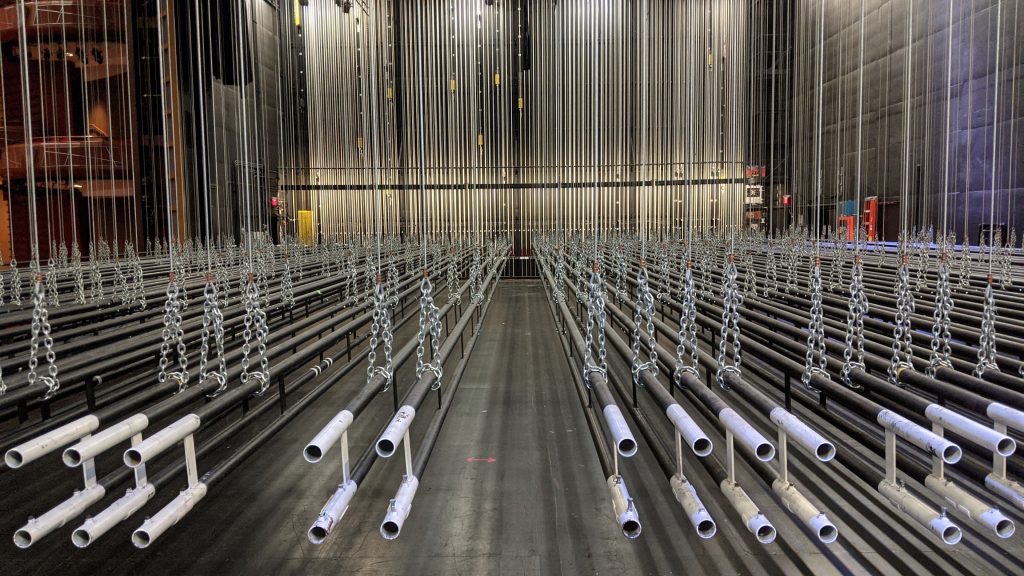
Are there further sorts of event venue inspections you would like to do?
While I am focusing on settling into the Regional Rigging Director role, I’m open to it for those needing inspections who want to pursue me. I just sent a quote today for an inspection on a small, manually operated winch rigging system in Tucson.
Is there a particular venue you’d like to peek behind the curtain?
I am fortunate enough with Rhino to travel across the country and see many arenas, theaters, stadiums, and amphitheaters. There isn’t a particular venue I would look forward to seeing behind the curtain but that doesn’t mean that I am not continuously impressed by some of the venues that I walk into. I am more fascinated by how other places function and utilize their spaces. Of course, some of these venues look amazing! Usually, I’m just pretty happy being a part of all of it.
